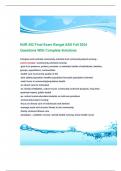College aantekeningen
International Management Notes Topic #2
- Instelling
- Haute Ecole ICHEC – ISC Saint-Louis - ISFSC
Notes of the International Management Seminar, on the second topic of social network analysis about intra-personal networks
[Meer zien]






